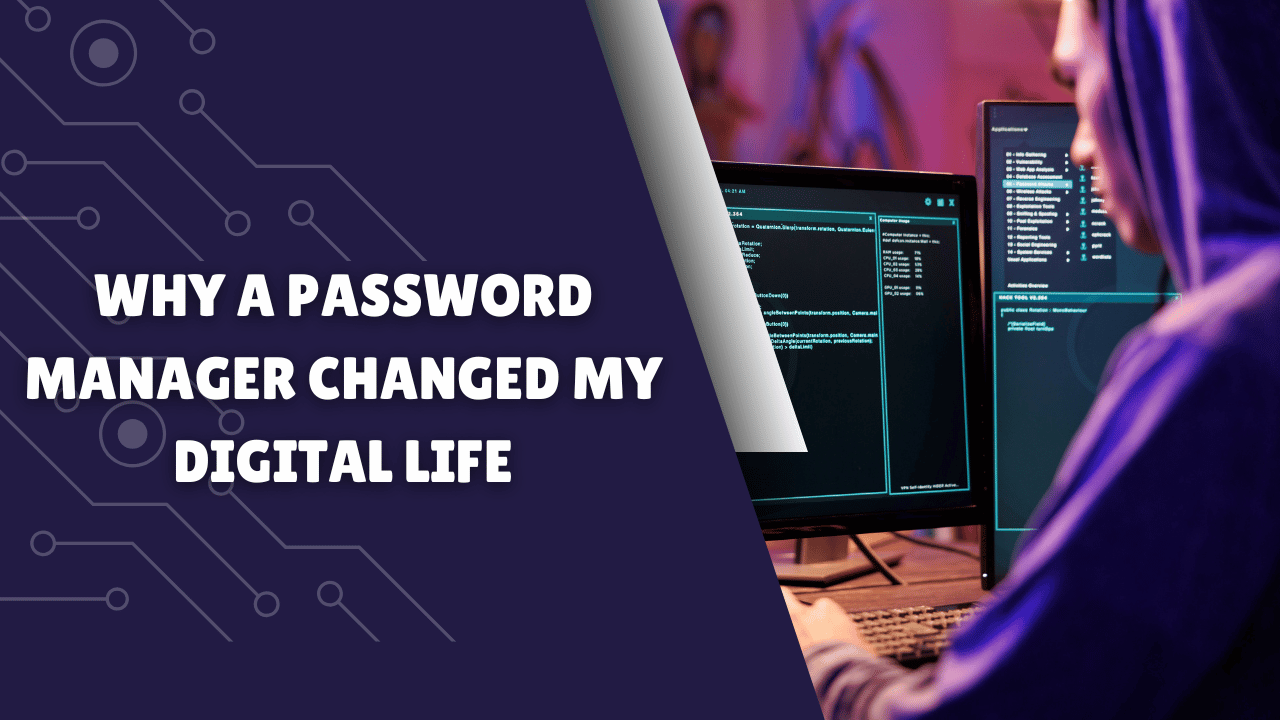Let me start with a confession: I used to reuse the same three passwords for everything. I had a “safe” one for banks and bills, a “fun” one for social media, and a “throwaway” for random websites I didn’t care about. Sound familiar? I know I’m not alone—because for a while, it felt like the only way to survive the growing chaos of online life.
But then I got hacked. And not in some flashy movie way. It was a slow, quiet intrusion: a strange login from another country, a few inexplicable charges on an old subscription, a sinking realization that I’d left too many doors wide open. That’s when I finally decided to give a password manager a real shot.
And wow—what a game-changer.
What Is a Password Manager?
In plain English, a password manager is like a vault for all your login credentials. You only need to remember one master password, and the software remembers the rest—securely encrypted and often behind multiple layers of protection.
Think of it like having a digital brain that never forgets, never repeats, and never uses “123456” as your Netflix login.
Some popular password managers you might’ve heard of include:
-
1Password
-
LastPass
-
Bitwarden
-
Dashlane
-
NordPass
Each has its strengths, but the core idea remains the same: take the burden of remembering complex, unique passwords off your shoulders.
My Journey: From Skeptic to Superfan
At first, I’ll admit, I was hesitant. The idea of putting all my passwords in one place sounded risky. “What if the password manager itself gets hacked?” I asked, nervously Googling worst-case scenarios.
But after digging deeper, I realized most reputable password managers use end-to-end encryption, meaning not even they can see your data. Everything is encrypted locally on your device, and your master password never touches their servers. That clicked for me.
So I signed up for a free trial with 1Password, and over the next few days, I slowly migrated my logins. It was tedious, but also oddly satisfying—like decluttering a digital junk drawer that had been spilling out for years.
And once it was all set up? Oh man. Logging into anything became as easy as clicking a button. The app even suggests strong, randomized passwords whenever I create a new account, like zP6!dC#8tRv0 instead of “fluffycat123.” And yes, it remembers those gibberish passwords so I don’t have to.
Why You Probably Need One Too
If you’re reading this, chances are you:
-
Use the same or similar passwords across multiple sites.
-
Forget passwords often and rely on “forgot password” emails.
-
Feel overwhelmed by the number of logins you have.
-
Want better security but don’t know where to start.
Sound about right? You’re not alone. And here’s the truth: password fatigue is real, and it’s putting a lot of people at risk.
Using a password manager isn’t just a convenience—it’s a genuine security upgrade. Especially in a world where data breaches are practically weekly news. Even if a single site gets hacked, your other accounts won’t be vulnerable if they all have unique passwords.
Free vs Paid: What’s Worth Paying For?
Plenty of password managers offer free versions—Bitwarden, for instance, has a surprisingly full-featured free tier. But the paid options often come with perks like:
-
Cross-device sync (phone, tablet, laptop)
-
Dark web monitoring
-
Secure sharing of passwords with family or coworkers
-
Emergency access features
I use a paid family plan with 1Password, which lets me manage my logins while also helping my partner and parents stay safe. (Yes, I finally convinced my mom to stop using “password” as her password.)
Common Myths—And Why They Don’t Hold Up
“I don’t have anything hackers would want.”
Unfortunately, that’s not how it works. Even if you’re not rich or famous, your online accounts can be valuable, whether for identity theft, phishing scams, or just reselling your login info in bulk on the dark web.
“It’s too complicated.”
Honestly, once you’re set up, it’s easier than the old way. I rarely type out passwords anymore. Autofill works like magic, and most managers have sleek browser extensions and mobile apps.
“I’ll just use my browser’s password saving tool.”
Built-in tools like Chrome’s password saver are convenient, but they’re not as secure or feature-rich. Most don’t offer encryption, breach monitoring, or secure sharing. And if someone gains access to your browser, they’ve got the keys to your kingdom.
A Few Tips If You’re Ready to Dive In
-
Pick a strong master password. This is the one you’ll need to remember, so make it long and memorable (think phrases like “MangoPizzaDance#92”).
-
Enable two-factor authentication (2FA). Most password managers support it, and you should use it.
-
Start small. Don’t feel pressured to move every login in one day. Start with your most important accounts: email, banking, and anything work-related.
-
Stay curious. Explore secure notes, payment info storage, and password health reports. They’re surprisingly handy.
Conclusion
I can’t tell you how freeing it is to stop worrying about weak passwords, forgotten logins, or the fallout of a breach. Using a password manager feels like a quiet form of self-care—an invisible layer of protection that makes daily digital life a whole lot smoother.
And here’s the kicker: once you start using one, you’ll probably wonder how you ever lived without it.
So if you’ve been on the fence, consider this your sign. Take 20 minutes. Set up a free account. See how it feels. Your future self, less stressed, more secure, and not locked out of their email, will thank you.

